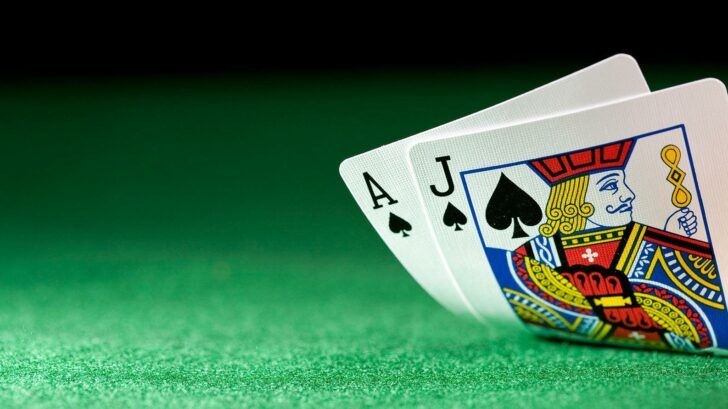In the Logical Shadows of Cryptography Relating to Blackjack

The code breakers of World War Two began a process that developed into a way of thinking that Claude Shannon would define as information theory.
Shannon, in his 1949 paper “Communication theory of secrecy systems”, took information theory and applied it to the shadowy world of codes and code-breaking. He took the one-time-pad method of encoding messages and proved mathematically that it was the most secure form of communication possible due to the almost infinite possibility for miscalculation on the part of anyone trying to break it.
The proof of this security as a theory of mathematical certainty wasn’t one of the smart strategies in the real world as it required the one-time-pads used by those sending and receiving messages to be entirely, and indeed, perfectly, random. The creation of these is by no means a small feat of software engineering and has a whole host of problems all of its own.
Breaking blackjack’s code
• Can a computer count blackjack cards?
• Deciphering decisions
• Betting on information
Of course the fact that at both ends of the process someone has the pad (in whatever form) is also a bit troublesome as it injects an element of human error into what is otherwise a perfect system. During the cold war some message senders used the same pad twice and thus scuppered the entire system, others let their pad fall into enemy hands.
Whilst Shannon proved beyond a shadow of a doubt that the one-time-pad was a theoretical certainty of security, in the real world the shadows had their doubts which are why one-time-pad message encoding is now very rarely used. Oddly a development in recent years is to use them to share secrets, where the information is placed in public and the key (the pad for decoding) is issued to all those who wish to see it.
World War Two
Shannon had joined Bell Labs in 1941 he began work on fire-control systems (intense mathematical computations) and then on the issues of cryptography that the war had made all important. The work done at Bletchley Park in the UK was of great interest to the US Navy’s cryptanalytic service and the cooperation between both agencies led to a meeting of two greats.
When the legendary Alan Turing met Claude Shannon he showed him the 1936 paper he’d written on the “Universal Machine” in which he described a calculation engine that could be given instructions to change its purpose. The basic premise for this machine was of a similar Boolean nature that Shannon found fascinating and had great effect on his subsequent work.
Strangely as important to the development of the information age we now all enjoy was the development of fire-control systems he worked on toward the end of the war. One of the problems with analogue transfer of data in systems that need rapid response times was the interference or ‘noise’ that went with each signal. This noise could disrupt systems ability to react.
In 1945 Shannon co-authored a paper that modeled the problem in terms of data and signal processing rather than amplification of modulated waves. The paper put forward the idea that information split into bits, sent and then decoded, provided a smoother, more error-free, result. This is the basis of all information transfer today, be it a digital radio broadcast or an online casino review.
Code To Casino
The development of this system of informational processing, that became known as information theory, didn’t limit itself to code breaking with the division of information into bits becoming the basis for computing and, indeed, card counting systems. It may seem odd but that system you use at the blackjack table is a result of World War Two.
With way of quantifying information and comparing it regardless of the manner in which that information is stored, gave rise to the binary system of representation that is still used by every microprocessor in the world. This simplification of information allows it to be analyzed mathematically and give clearer indication of utility maximization.
This maximization of utility (getting the best possible result) is more easily achieved because the math behind probability of outcome could now be calculated (to a reasonable degree) regardless of the imperfection of known data. That is to say, you don’t know what the dealer’s other card is, but regardless of what it might be you can still calculate the best possible decision from what you DO know.
With the fractional betting systems of long term bankroll growth requiring such imperfect data based decisions every hand, the maximization of utility (we call it winning) depends upon the correct analysis of data with the effect of the others involved (in this case the dealer) being irrelevant to that decision. Shannon’s work made this possible, and he proved it at the tables himself.
Read more about Claude Shannon, blackjack and information theory.




